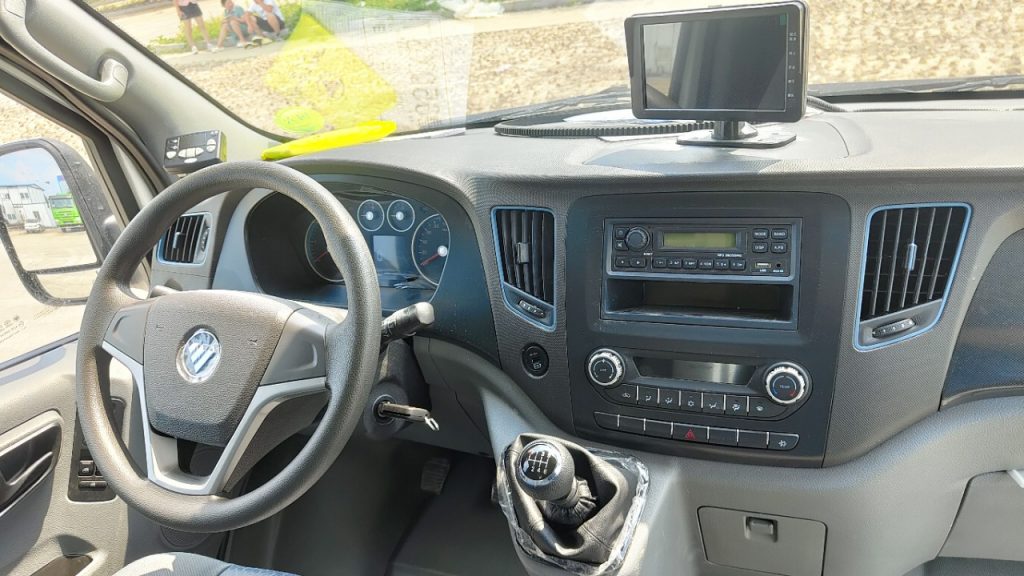Maintaining the Performance and Safety of Truck-Mounted Cranes A Comprehensive Guide to Maintenance Practices

Introduction
Truck-mounted cranes are essential equipment in various industries, providing the capability to lift and transport heavy loads with ease and efficiency. To ensure the continued performance and safety of these cranes, regular maintenance is crucial. Proper maintenance practices not only extend the lifespan of the equipment but also reduce the risk of accidents and downtime. In this comprehensive guide, we will delve into the various aspects of truck-mounted crane maintenance, covering everything from routine inspections to more in-depth servicing procedures.
1. Importance of Maintenance for Truck-Mounted Cranes
Truck-mounted cranes are subjected to rigorous use in demanding work environments, making them susceptible to wear and tear over time. Regular maintenance plays a vital role in preserving the performance and safety of these cranes. By adhering to a structured maintenance schedule, operators can detect potential issues early on, preventing costly breakdowns and minimizing the risk of accidents. Additionally, proper maintenance helps ensure compliance with regulatory requirements and enhances the overall efficiency of crane operations.
2. Routine Inspection and Maintenance Checks
Routine inspections are the cornerstone of effective crane maintenance. Operators should conduct daily pre-shift inspections to identify any visible signs of damage or wear. This includes checking for leaks, loose bolts, worn components, and abnormal sounds during crane operation. Regular maintenance checks should also be performed at specified intervals to assess the condition of critical components such as hydraulic systems, electrical wiring, and structural integrity. By detecting and addressing issues promptly, operators can prevent minor problems from escalating into major malfunctions.
3. Lubrication and Fluid Checks
Proper lubrication is essential for the smooth operation of truck-mounted cranes. Regularly greasing moving parts such as hinges, pulleys, and bearings helps reduce friction and wear, extending the lifespan of the equipment. Operators should follow the manufacturer's recommendations for the type and frequency of lubrication required for each component. In addition to lubrication, fluid checks are crucial for maintaining optimal crane performance. Hydraulic fluid levels should be monitored regularly, and any leaks or contamination should be addressed promptly to prevent system failure.
4. Structural Inspections and Load Testing
Structural integrity is paramount when it comes to crane safety. Periodic inspections should be conducted to assess the condition of the crane's boom, outriggers, and other structural components. Any signs of corrosion, cracks, or deformation should be addressed immediately to prevent catastrophic failure. Load testing is another critical aspect of crane maintenance, ensuring that the crane can safely lift and transport loads within its rated capacity. Regular load testing helps verify the crane's performance and identify any issues with the hydraulic system or lifting mechanisms.
5. Electrical System Maintenance
The electrical system of a truck-mounted crane is responsible for controlling various functions such as boom extension, rotation, and load lifting. more.. and maintenance of the electrical components are essential to prevent malfunctions and ensure safe operation. Operators should check for loose connections, damaged wiring, and faulty switches during routine inspections. Any issues with the electrical system should be addressed by qualified technicians to prevent electrical hazards and system failure.
6. Brake and Safety System Checks
Brake systems are critical for ensuring the safe operation of truck-mounted cranes, especially when lifting heavy loads or working on uneven terrain. Regular brake inspections should be carried out to check for wear, contamination, and proper adjustment. In addition to the brake system, operators should also inspect the crane's safety features, such as overload protection devices, emergency stop buttons, and audible alarms. Ensuring that these safety systems are functioning correctly can prevent accidents and injuries in the workplace.

7. Training and Operator Responsibilities
Proper maintenance of truck-mounted cranes requires a collaborative effort between operators, maintenance personnel, and management. Operators should receive comprehensive training on crane operation, maintenance procedures, and safety protocols. They should be familiar with the manufacturer's guidelines for maintenance and know how to perform routine inspections effectively. Additionally, operators should report any issues or concerns regarding the crane's performance to the maintenance team promptly. By fostering a culture of safety and accountability, organizations can ensure that crane maintenance is prioritized and carried out effectively.
8. Record-Keeping and Documentation
Maintaining accurate records of crane maintenance activities is essential for tracking the equipment's history and compliance with regulatory requirements. Operators should keep detailed logs of inspections, repairs, and servicing performed on the crane. This documentation can help identify maintenance trends, track component lifespans, and plan for future maintenance needs. In the event of an inspection or audit, having comprehensive maintenance records can demonstrate that the crane has been well-maintained and is safe for operation.
9. Outsourcing Maintenance Services
While some maintenance tasks can be performed in-house by trained personnel, certain complex procedures may require the expertise of specialized service providers. Outsourcing maintenance services to certified crane technicians can ensure that the equipment is serviced according to industry standards and manufacturer recommendations. Professional maintenance providers have the tools, knowledge, and experience to diagnose and address issues effectively, reducing downtime and prolonging the lifespan of the crane. When selecting a maintenance service provider, organizations should prioritize qualifications, reputation, and adherence to safety standards.
10. Conclusion
Truck-mounted cranes are invaluable assets in numerous industries, facilitating the efficient lifting and transportation of heavy loads. To maximize the performance and safety of these cranes, regular maintenance is paramount. By following a comprehensive maintenance regimen that includes routine inspections, lubrication, structural checks, and electrical system maintenance, operators can ensure that their cranes operate smoothly and reliably. Training operators on maintenance procedures, keeping detailed records, and outsourcing maintenance services when necessary are essential components of a proactive maintenance strategy. By investing in proper maintenance practices, organizations can safeguard their workforce, protect their investments, and optimize the efficiency of their crane operations.
